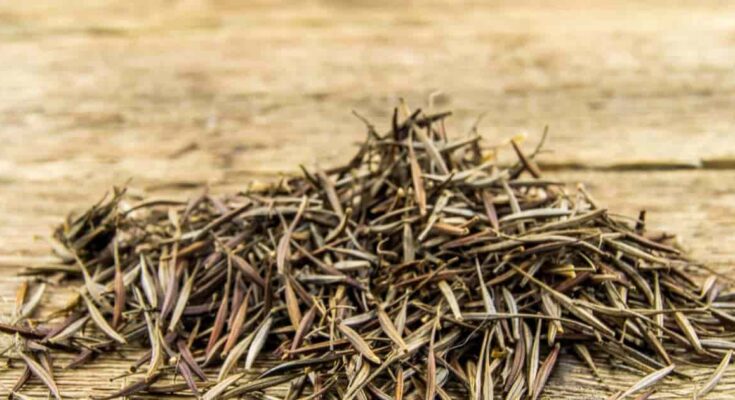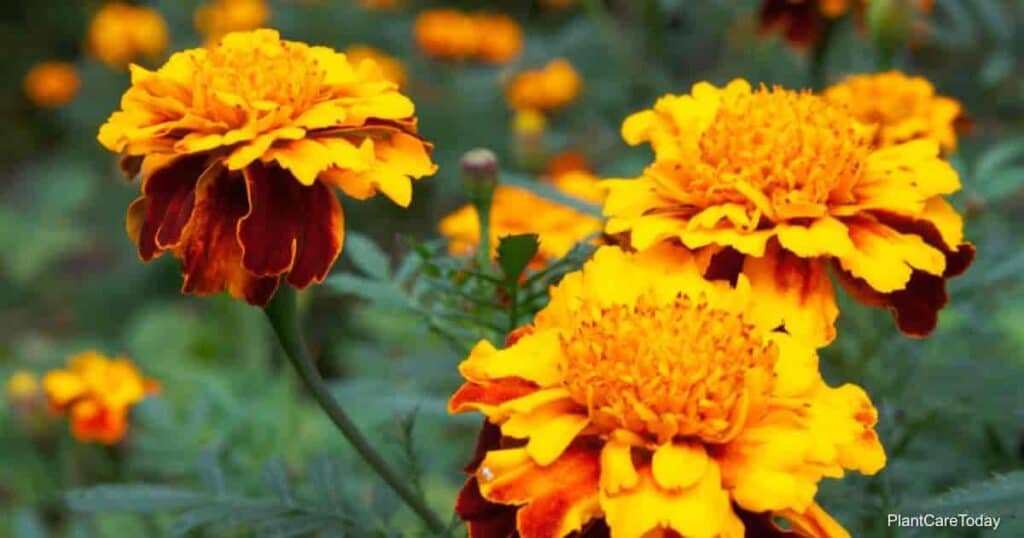Marigolds are some of the easiest and most useful flowers you can grow. They are great for planters, gardens, and pots and can also help repel pests and attract pollinators.
In fact, they are often a child’s first flower because of how easy it is to take care of marigold flowers.
But whether you’re just starting or are a master gardener, the marigold is a wonderful choice.
Here’s everything you need to know about growing these lovely little flowers from seeds.
When And How To Plant Marigold Seeds?
Marigold seeds are quite easy to propagate, although there are a few rules to follow if you want the best results.
This guide is for true marigolds, so be sure you know what type of marigold you’re growing so you can account for any variations in care needs.
Warning: Not all Marigolds Are Marigolds!
As mentioned, not all marigolds are created equally, and many marigolds aren’t actually marigolds at all!
True marigolds belong to the genus Tagetes and include most of the popular species and cultivars.
Common marigolds are actually a different species (Calendula officinalis) and are often referred to as pot marigolds because of how easily they can be planted in containers.
Common marigolds may be unrelated to true marigolds, but they have similar care needs, so you’ll be able to grow them using this guide at a slightly lower success rate.
However, other plants, commonly called marigolds, will not grow well using these instructions.
These plants include:
- Cape marigolds (there are several plants under this name)
- Corn marigold (Glebionis segetum)
- Desert marigold (Baileya multiradiata)
- Marsh marigold (Caltha palustris)
- Tree marigold (Tithonia diversifolia)
Be sure to verify any seed packets or ask the person giving you your seeds which kind of marigold plant you’re getting so you can ensure a successful planting.
The Best Time To Sow
Once you know you have a true marigold, it’s time to think about sowing times. This is perhaps the most complicated part of sowing if you plan to grow the plants outdoors.
Of the three most common species, French marigolds (Tagetes patula) and signet marigolds (Tagetes tenuifolia) will bloom 50 to 60 days after planting, while Mexican marigold (Tagetes erecta) takes 10 to 100 days.
If you intend to grow them annually, you can plant these marigolds outdoors in USDA hardiness zones 2 to 12, but they’ll only grow as a perennial in zones 8 to 11.
You will want to plant them outdoors in spring soon after the final frost. However, if you intend to start them off indoors (or keep them in pots), you can sow much earlier.
The general recommendation is to plant them 6 to 8 weeks before the expected final frost date.
Remember that marigolds are extremely sensitive to frost, so never attempt to plant them before the risk of frost has ended.
Setting The Stage: Soil And Sowing
Marigolds can grow in just about any soil type if it drains well.
For sowing indoors, you’ll want to use a sterile potting mix (Miracle-Gro is perfect for marigolds) or a soilless mix.
You can plant 2 to 3 seeds per section in a starter tray, covering them with about ¼” inch of your chosen medium.
For outdoor planting, you’ll need to space your seeds appropriately.
Look at the height of your marigold and plant space them accordingly:
- Tall varieties 18 to 24″ inches apart
- Regular varieties are 12″ to 15″ inches apart
- Dwarf varieties 6″ inches apart
Regardless of where you’re planting, give the planting area a light misting so the soil remains slightly damp.
You’ll also want to place indoor trays somewhere they’ll have access to plenty of sunlight (or a grow lamp) and where there’s an average temperature of 70° to 75° degrees Fahrenheit.
Germinating
Marigolds require an average temperature of 70° to 75° degrees Fahrenheit to germinate, so your outdoor seeds might take a little longer to sprout.
However, the seeds will only take about 5 to 7 days to germinate in steady conditions and usually within 14 days outdoors.
Be sure to mist the soil daily, so it remains slightly damp gently.
You will need to thin out the seedlings once they reach 2” inches tall to ensure they’re at the correct distance chrome one another (see above outdoor spacing).
You can also transplant the seedlings to individual pots at this time.
Hardening Seedlings
Before you can transplant your marigold seedlings outdoors, you’ll need to harden them off.
This simple process helps your plants get used to the less stable outdoor environment, so they have a better chance of surviving any sudden changes.
Once the danger of frost has passed, bring the seedlings outdoors to a shaded spot for a few hours, then bring them back inside.
It’s best to have them outside around noon or early afternoon to ensure they’re in before the sun sets.
Do this every day for slightly longer periods each day.
After around 3 to 4 days, they also begin increasing the amount of light they receive while outdoors.
After a week or two, you’ll be able to transplant the marigolds to their permanent spot without worrying about the risk of scorching or temperature shock.
Companion Planting And Other Planting Ideas
Also known as complementary gardening, this is the process of mixing plants that provide benefits with others that lack those benefits.
Marigolds are excellent companion plants because their slightly pungent smell chases off many common garden pests such as aphids, mealybugs, and several types of caterpillars.
They can also help against ants, which get confused if the smell of a plant is stronger than that of their chemical trails.
Marigolds can be used as border plants, but you can also mix them with other plants to help protect them from pests or encourage pollinators such as bees and butterflies to visit those plants.
Of course, marigolds work great in most flowerbeds and are perfect additions to all sorts of containers.
But no matter how you choose to use them in your home or garden, the satisfaction of growing these wonderful flowers from seeds is well worth the small effort involved.
Source link
Originally posted 2022-08-29 15:35:43.






